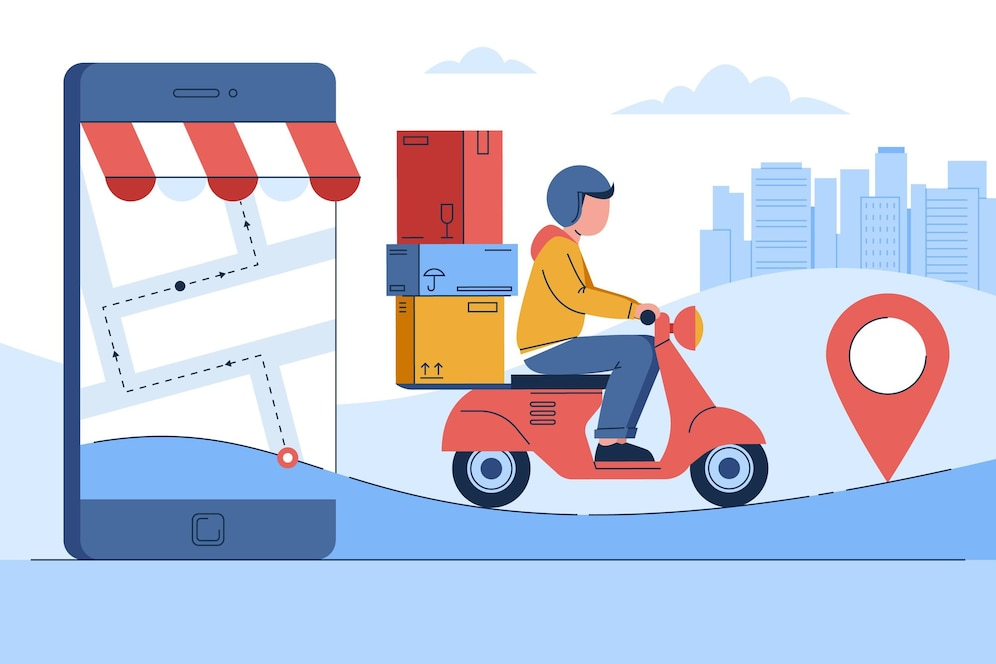The Ultimate Checklist for Postmates Clone App Development

Developing a Postmates clone app can be a rewarding venture, providing a streamlined on-demand delivery service to a wide range of users. However, to ensure the success of your app, you must follow a comprehensive development checklist that covers everything from planning and design to testing and launch. This ultimate checklist will guide you through the essential steps for creating a Postmates clone app that stands out in the competitive market for Postmates clone app development.
Planning and Research
Market Research
Identify Your Target Audience
Understanding who your app is for is crucial. Conduct surveys and research to identify the demographics, preferences, and needs of your potential users.
Analyze Competitors
Study existing delivery apps like Postmates, Uber Eats, and DoorDash. Analyze their strengths, weaknesses, and user reviews to understand what works and what doesn’t.
Define Your Unique Selling Proposition (USP)
Identify Gaps in the Market
Based on your market research, identify areas where existing apps are lacking and where your app can offer better solutions.
Highlight Unique Features
Decide on the unique features and services that will set your app apart from the competition.
Technical Specifications
Choose the Right Technology Stack
Frontend Development
Select frameworks and languages for the frontend such as React Native or Flutter for a seamless user experience across different devices.
Backend Development
Choose robust backend technologies like Node.js, Python, or Ruby on Rails to handle server-side operations efficiently.
Database Management
Opt for reliable databases like MongoDB, PostgreSQL, or Firebase to store user data securely.
API Integration
Payment Gateways
Integrate popular and secure payment gateways like Stripe, PayPal, and Square to offer multiple payment options.
Maps and Geolocation
Use APIs from Google Maps or Mapbox for accurate geolocation and real-time tracking.
Push Notifications
Implement push notification services such as Firebase Cloud Messaging (FCM) to keep users informed about their orders.
Design and User Experience
User Interface (UI) Design
Intuitive Navigation
Ensure that the app is easy to navigate with a clean and intuitive design.
Brand Consistency
Maintain consistency in your app’s color scheme, fonts, and overall design to strengthen your brand identity.
User Experience (UX) Design
Easy Registration and Login
Provide simple and quick registration and login options, including social media login and OTP verification.
Smooth Order Placement
Design a straightforward process for browsing products, adding them to the cart, and placing orders.
Real-Time Tracking
Implement real-time tracking features so users can monitor their deliveries.
Development and Testing
Agile Development Methodology
Sprint Planning
Break down the development process into manageable sprints, setting clear goals for each phase.
Continuous Integration
Regularly integrate new code into the main branch to catch and fix bugs early.
Rigorous Testing
Unit Testing
Test individual components of the app to ensure they function correctly.
Integration Testing
Test the interactions between different components to ensure they work together seamlessly.
User Acceptance Testing (UAT)
Conduct UAT to get feedback from real users and make necessary improvements.
Launch and Marketing
Pre-Launch Activities
Beta Testing
Conduct a beta test to gather feedback from a small group of users before the official launch.
App Store Optimization (ASO)
Optimize your app’s listing on the App Store and Google Play with relevant keywords, descriptions, and high-quality screenshots.
Launch Strategy
Social Media Campaigns
Use social media platforms to create buzz around your app launch.
Influencer Partnerships
Collaborate with influencers to reach a wider audience.
Press Releases
Issue press releases to announce your app launch to the media.
Post-Launch and Maintenance
User Feedback
In-App Feedback
Implement features for users to provide feedback directly within the app.
Regular Surveys
Conduct regular surveys to gather user opinions and suggestions.
Continuous Improvement
Regular Updates
Release regular updates to fix bugs, improve performance, and add new features.
Performance Monitoring
Use analytics tools to monitor app performance and user behavior.
Conclusion
Creating a successful Postmates clone app requires meticulous planning, thorough research, and careful execution. Partnering with an on-demand app development company ensures that you cover all critical aspects, from understanding your target audience and choosing the right technology stack to designing a seamless user experience and implementing a robust marketing strategy. Continuous improvement, regular updates, and efficient performance monitoring are essential to maintaining a high-quality app that meets users' evolving needs. With attention to detail and the right support, your Postmates clone app can thrive in the competitive market.
- postmates_app
- postmates_clone_app
- postmates_clone
- postmates_clone_script
- on-demand_postmates_clone_script
- postmates_clone_app_development
- postmates_app_clone_script
- postmates_app_clone
- all-in-one_delivery_app
- app_like_postmates
- postmates_food_delivery_clone_app
- multi-delivery_postmates_clone_app
- on-demand_multi-delivery_clone_script
- white_label_postmates_clone_app
- grocery_delivery_app
- food_delivery_app
- Questions and Answers
- Opinion
- Story/Motivational/Inspiring
- Technology
- Art
- Causes
- Crafts
- Dance
- Drinks
- Film/Movie
- Fitness
- Food
- Games
- Gardening
- Health
- Home
- Literature
- Music
- Networking
- Other
- Party
- Religion
- Shopping
- Sports
- Theater
- Wellness
- News
- Culture
- War machines and policy

